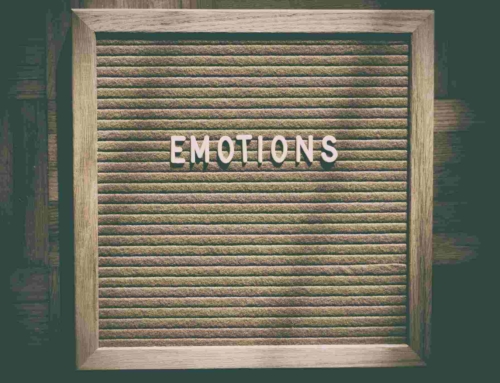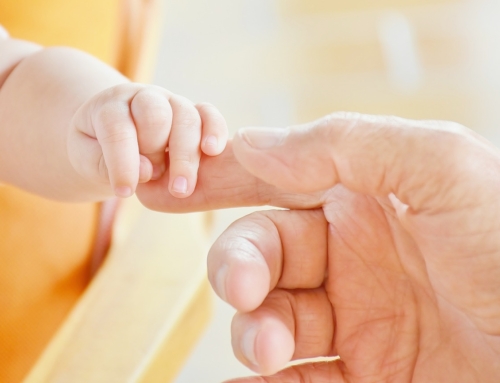Codependency is one trait in toxic friendships. Just like romances, friendships may also be unhealthy, so not all friends are healthy for you. The definition of codependent friendships, how to spot them, and how to recover are all provided here.
What is a codependent friendship?
Co-dependent connections are so intimate that all boundaries have entirely melted away, even though close
friendships are necessary. Boundaries let us distinguish between our wants and feelings and those of other people by defining our personal limitations.
Codependent friends lose these boundaries and grow dependent on one another, becoming “enmeshed” in their friends’ lives. In romantic relationships, we can usually tell when a couple is codependent and why that is problematic, but we occasionally forget that the same is true in friendships.
“Everyone loves their pals. A fulfilling, well-rounded, and healthy existence depends on friendship and human connection ” said Miami Hypnosis and Therapy’s Anna Marchenko, LMHC, Ed.M. However, when boundaries are breached, the degree of a person’s connection to another person can increase to an unhealthy level for both parties.
Codependent friendships “may take numerous shapes,” according to therapist and Take Root Therapy founder Harouni Lurie, LMFT. They almost always have a “imbalanced power dynamic,” which is another telling sign in addition to the absence of limits. Typically, one person is always the giver while the other is always the consumer.
Warning signs of a codependent friendship
1. Someone constantly needs to be saved.
It’s normal and healthy to require additional support from your friends on occasion, such as during a breakup or after losing a job. However, if one friend constantly needs saving or excusing, the friendship may be codependent and lack a true give-and-take dynamic.
2. One buddy spends a lot of time attempting to solve the issues of the other friend.
The “giver” in a codependent relationship typically invests a lot of time and effort into helping a friend, even at the expense of ignoring his or her own issues. The “taker” rarely responds with the same devoted enthusiasm.
 3. After hanging out together, one friend frequently gets exhausted.
3. After hanging out together, one friend frequently gets exhausted.
Friends who are “givers” frequently truly like talking and lending a hand. According to Lurie, many codependents enjoy feeling needed or like good people because “it can feel really good to help someone or to be understanding.” But he or she gradually begins to feel emotionally spent after each interaction because of the toll that all that giving has taken.
4. You frequently prioritize the demands of your friends over your own, or vice versa.
One of the most obvious symptoms that a friendship is co-dependent, according to Marchenko, is this. The boundaries of codependent friendships are porous, making it simple for one person’s wants to take precedence. Even defining the boundary between one person’s needs and another’s can become challenging.
5. If one person is upset, so is the other.
Friends with codependencies may also express feelings. The other individual feels the same emotions as the first person when they are sad. Extreme empathy is displayed in this situation when your feelings begin to be controlled by your friend’s moods rather than your own. (This is the distinction between co-dependency and empathy.)
6. Individual decisions or viewpoints are difficult to stand up for in a friendship.
Friends who are co-dependent eventually become entangled, according to Marchenko. When the “giver” friend’s needs, preferences, or opinions diverge from those of the “taker,” it becomes extremely difficult for the giver to assert himself or herself. Even the mere notion of it can make him or her feel bad.
7. Both parties depend on their friendship.
Two friends who are codependent are excessively dependent on one another to meet all of their needs. For example, the “taker” may depend on the “giver” for emotional support, whereas the “giver” may depend on the “taker” to feel important and deserving of respect. It’s okay to rely on your friends, but you shouldn’t rely entirely on them to maintain your emotional stability or sense of self.
 8. If one of the friends develops a closeness with another person, the other feels jealous.
8. If one of the friends develops a closeness with another person, the other feels jealous.
Co-dependent relationships might feature jealous or controlling behavior. The other person might feel extremely threatened if a friend starts to get close to someone else, such as another friend or even a romantic interest.
How to handle a codependent friendship
Take these steps to begin overcoming the problem of a co-dependent friendship.
1. Determine how you got here.
The first thing to think about, advises Lurie, “if you’ve realized that most of your friendship is devoted to your friend’s wants and needs and not your own, is why you gravitated to this situation in the first place.” It might be related to your sense of self-worth and a deep-seated desire to feel significant or “good.
It frequently has roots in an old family dynamic from childhood. It might be beneficial to have a Christian counselor by your side to support you as you work to break this habit since it can be very deeply ingrained.
2. Work on prioritizing your needs.
Boundary-setting is a continuous process. Experience what it’s like to recognize your own needs and desires, express them to your friend, and then prioritize them. If you don’t use the word “no,” this is the opportunity to practice.
This can feel extremely unsettling because you might worry that he or she won’t want to remain your friend if you stop giving excessively, according to Lurie. But despite the fact that claiming your independence from your friend may seem insulting to him or her, doing so is actually a kind gesture. The more loving choice is to hold people accountable and give them a chance to change, as opposed to remaining silent to preserve the status quo, according to Lurie.
3. Be ready for a significant change.
It’s possible that once the friendship strikes a healthy balance, the “taker” friend won’t be as invested in it. But in any case, do you really want a friend like that? Both parties must agree if the friendship is to change for the better. If both people refuse to commit to comprehending each other’s needs for boundaries, friendships like these might not last, warns Marchenko.
However, if your friend is sincere, he or she will be more than willing to adapt to a new, more positive friendship dynamic. He or she may even be anticipating it because it will allow him or her to get to know you better.
Tips for handling codependency
 1. Acknowledge the problem.
1. Acknowledge the problem.
The first step in transforming a codependent friendship into a healthy one is for at least one person to acknowledge that there is a problem, even if the other person is blind to it. After all, while you have no control over your friend’s actions, you do have control over your own.
“First understand that your friend may not think that there is anything wrong,” Lurie advises. if you notice that your friend frequently gives more than they receive or that your friendship frequently centers on you. We frequently adopt the roles that feel the most comfortable to us, so your friend may be unintentionally disappearing into that role.
2. Recognize how to look after yourself.
Healthy friendships don’t necessitate having someone available all the time to act as a sounding board or solve problems. You can establish boundaries by being more self-reliant in place of overly relying on your friend. By keeping a journal, enlarging your network of support, and engaging in solo activities, you may take care of yourself.
If you struggle with this change, Marchenko suggests getting professional therapy from a Christian counselor for support.
3. More giving, less taking.
Give more and take less to break the codependent friendship cycle. You could ask your friend more personal questions, Lurie suggests, being sure to find out how they’re really feeling. Likewise, education is crucial “how to spot when [your] deeply compassionate and giving friend is going too far.”
Conclusion
To break codependency, both friends can learn to take care of each other while also taking care of themselves if they have mutual empathy and self-awareness. If you are having issues with codependency, contact us and speak to a Christian counselor. Your counselor can provide valuable third-party insight into your issues and help you find solutions for a happier life.
“Elephants”, Courtesy of Paweldotio, Unsplash.com, CC0 License; “Camels”, Courtesy of Sebastian Laube, Unsplash.com, CC0 License; “Dogs”, Courtesy of Karsten Winegeart, Unsplash.com, CC0 License; “Puffins”, Courtesy of Wynand van Poortvliet, Unsplash.com, CC0 License










